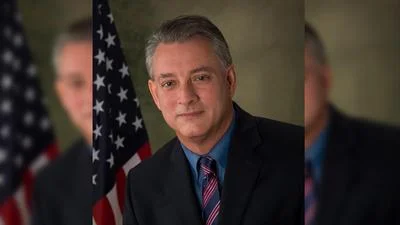The Congressional Record is a unique source of public documentation. It started in 1873, documenting nearly all the major and minor policies being discussed and debated.
“HYDROGRAPHIC SERVICES IMPROVEMENT ACT AMENDMENTS OF 2002” mentioning the U.S. Dept. of Commerce was published in the Senate section on pages S11797-S11799 on Nov. 20, 2002.
The publication is reproduced in full below:
HYDROGRAPHIC SERVICES IMPROVEMENT ACT AMENDMENTS OF 2002
Mr. REID. Mr. President, I ask unanimous consent that the Senate proceed to the consideration of H.R. 4883, which is at the desk.
The PRESIDING OFFICER. The clerk will report the bill by title.
The legislative clerk read as follows:
A bill (H.R. 4883) to reauthorize the Hydrographic Services Improvement Act of 1998, and for other purposes.
There being no objection, the Senate proceeded to consider the bill.
Mr. HOLLINGS. Mr. President, I rise today to comment on H.R. 4883, a bill to reauthorize the Hydrographic Services Improvement Act of 1998. This legislation authorizes programs supporting NOAA's strategic missions to promote safe navigation and sustain healthy coasts. I am especially supportive of this bill because it improves the hydrographic services around our Nation and authorizes the activities of the Commissioned Corps of the National Oceanic and Atmospheric Administration, NOAA Corps.
Last week Congress approved the conference report on the Maritime Transportation Security Act, which will enhance security in our Nation's ports. H.R. 4883 authorizes some key provisions to support that effort by authorizing and increasing the number of officers in our NOAA Corps and supporting establishment of real time hydrographic monitoring systems to enhance navigation and safety. NOAA's hydrographic programs share data and work closely with the U.S. Coast Guard and U.S. Navy, and such collaborations have increased since September 11, 2001. Accurate navigation information supports safe and efficient military deployment and seaport evacuation. About 90 percent of all military equipment and supplies for overseas operations are shipped out of U.S. ports.
Seaports have always been an integral part of our Nation's commerce. Today, more than 95 percent of foreign trade by weight moves by sea, and trade is projected to double by 2020. Vessels are twice as large as they were 50 years ago, testing the capabilities of many ports. Increased ferry, cruise line, and recreational boating activities contribute a rise in seaport congestion. Each year there are about 3,500 commercial and 7,000 recreational boating accidents.
The safe and efficient movement of products depends upon the marine transportation system. Advanced, highly accurate hydrographic, oceanographic and related data improve mariners' situational, three-
dimensional awareness, which increases efficiency, reduces risk, and safeguards the marine environment. Such advanced data and services are an integral part of implementing an internationally compliant electronic chart display and information system.
I am especially supportive and pleased that this bill includes language to reauthorize the NOAA Corps. The NOAA Corps, the smallest of the seven uniformed services of the United States, plays a very important role at NOAA and for the Nation. The service, consisting of approximately 265 commissioned officers, provides NOAA with professionals trained in engineering, earth sciences, oceanography, meteorology, fisheries, science, and other related disciplines. The officers serve in assignments within the five major line offices of NOAA: National Ocean Service, NOS; National Weather Service, NWS; National Marine Fisheries Service, NMFS; Oceanic and Atmospheric Research OAR; and National Environmental Satellite, Data, and Information Service, NESDIS. Officers operate ships, fly aircraft into hurricanes, lead mobile field parties, manage research projects, conduct diving operations, and serve in staff positions throughout NOAA. In addition they conduct hydrographic surveys along our Nation's coast in order to make our waters safe for marine commerce.
The NOAA Corps is essential to NOAA's coverage of our seas and our skies; in hours of crisis, NOAA employees have been found issuing the tornado warnings that saved hundreds of lives from a deadly storm, flying into the eyes of hurricanes to gather information about possible landfall, fighting to free three gray whales trapped in the ice, fielding a massive scientific operation to guide the recovery from an oil spill, and monitoring via satellites the movement of hurricanes and other severe storms, volcanic ash and wildfires that threaten communities.
As marine professionals, the NOAA Corps personnel may be transferred to the military services in times of national emergency, and this bill describes a number of technical areas designed to bring the NOAA Corps into line with Department of Defense standards in terms of rank, promotion and pay grade. This bill authorizes a gradual increase in the number of officers to accommodate the growing needs associated with new Navigation Response Teams that will be established and located in ports around the country.
Finally, this legislation amends the Oceans Act of 2000 to ensure that the commission remains in existence 90 days after the date of the final submission of the report. This will allow the commission to provide advice to Congress on its report and on the President's implementation plan, but will not affect the due date established in the Act for submission of the Commission's report. The amendment would also authorize appropriations of $8.5 million; this increase reflects the resources necessary to hold nine regional meetings--three more than mandated by the Oceans Act. These regional meetings are essential to ensuring the views of all citizens are reflected in the work of the Commission, and I have fully supported this regional outreach effort, and the excellent work of the Ocean Commission and its staff.
I want to thank my colleagues in the House of Representatives for working with me to create a bill that does so much to enhance the safety and navigation along our coasts.
Mr. SARBANES. Mr. President, the legislation before the Senate, H.R. 4883, the Hydrographic Services Improvement Act Amendments of 2002, includes important provisions to reauthorize the NOAA Chesapeake Bay Office, NCBO. This office which was first established in 1992 pursuant to Public Law 102-567, has been the focal point for all of NOAA's activities within the Chesapeake Bay watershed and a vital part of the effort to achieve the long-term goal of the Bay Program--restoring the Bay's living resources to healthy and balanced levels.
During the past 10 years, the NCBO has made great strides in realizing the objectives of the NOAA Authorization Act of 1992 and the overall Bay Program living resource goals. Working with other Bay Program partners, important progress has been made in surveying and assessing fishery resources in the Bay, developing fishery management plans for selected species, undertaking habitat restoration projects, removing barriers to fish passage, and undertaking important remote sensing and data analysis activities. But NOAA's responsibilities to the Bay restoration effort are far from complete. Some populations of major species of fish and shellfish in Chesapeake Bay such as shad and oysters, remain severely depressed, while others, such as blue crab are at risk. Baywide, some 16 of 25 ecologically important species are in decline or severe decline, due to disease, habitat loss, overfishing and other factors. The underwater grasses that once sustained these fisheries are only at a fraction of their historic levels. Research and monitoring must be continued and enhanced to track living resource trends, evaluate the responses of the estuary's biota to changes in their environment and establish clear management goals and progress indicators for restoring the productivity, diversity and abundance of these species. Likewise, education to improve understanding by elementary and secondary students and teachers of the living resources in the Chesapeake Bay ecosystem is a top priority.
In order to ensure NOAA's continued full participation in the Bay's restoration and in meeting with goals and objectives of Chesapeake 2000, in the 106th Congress I introduced legislation, together with several of my colleagues, to reauthorize the NOAA Bay Program office and provide the office with additional resources and authority. No action was taken on that legislation so in the 107th Congress, Senators Warner, Mikulski, Allen and I introduced new legislation to reauthorize the NCBO. A similar measure was introduced in the House by Representative Gilchrest and the entire Maryland House delegation and provisions of these bills are included in section 401 of the legislation before us. The provisions authorize and direct NOAA to undertake a special 5-year study, in cooperation with the scientific community of the Chesapeake Bay and appropriate other Federal agencies, to develop the knowledge base required for understanding multispecies interactions and developing multispecies management plans. NOAA is also authorized to carry out a small-scale fishery and habitat restoration grant and technical assistance program to help citizens organizations and local governments in the Chesapeake Bay watershed undertake habitat, fish, and shellfish restoration projects. The legislation authorizes $6 million a year specifically to fund the NOAA Chesapeake Bay office and carry out these two activities. And I want to emphasize that this authorization level is intended to address only NCBO's base budget and these two initiatives and that additional funds are provided for the work that the NCBO conducts in oyster reef restoration, oyster disease research, education and training and blue crab research.
I am disappointed however that the legislation did not include two other provisions which we sought to create an internet-based Coastal Predictions Center for the Chesapeake Bay and to formally authorize the NOAA Chesapeake Bay Office's Bay Watershed Education and Training, B-
WET, Program that we established last year. Moreover, it is critical that the funding levels for the NOAA Bay Program activities continue to grow to meet these needs and NOAA's responsibilities in oyster and SAV restoration efforts, among other initiatives. If we are to achieve the ultimate, long-term goal of the Bay Program--protecting, restoring and maintaining the health of the living resources of the Bay--additional financial resources must be provided. I plan to introduce new legislation in the 108th Congress to address these shortcomings and look forward to working with my colleagues on the Commerce Committee in this regard.
Mr. KERRY. Mr. President, I rise today to offer a few comments concerning H.R. 4883, a bill to reauthorize the Hydrographic Services Improvement Act of 1998. I am especially supportive of this bill's inclusion of language to reauthorize the Commissioned Corps of the National Oceanic and Atmospheric Administration, NOAA Corps. The NOAA Corps plays a very important role in NOAA and to our Nation.
The NOAA Corps is the smallest of the seven uniformed services of the United States. The service, consisting of approximately 299 commissioned officers, is an integral part of NOAA, an agency under the U.S. Department of Commerce.
The NOAA Corps traces its roots back to the former U.S. Coast and Geodetic Survey, which dates back to 1807 and President Thomas Jefferson. The NOAA Corps today provides a cadre of professionals trained in engineering, earth sciences, oceanography, meteorology, fisheries science, and other related disciplines. The officers serve in assignments within the five major Line Offices of NOAA: National Ocean Service, NOS; National Weather Service, NWS; National Marine Fisheries Service, NMFS; Oceanic and Atmospheric Research, OAR; and National Environmental Satellite, Data, and Information Service, NESDIS. Officers operate ships, fly aircraft into hurricanes, lead mobile field parties, manage research projects, conduct diving operations, and serve in staff positions throughout NOAA. In addition they conduct hydrographic surveys along our nation's coast in order to make our waters safe for marine commerce.
As Chairman of the Oceans, Atmosphere and Fisheries Subcommittee allow me to explain a little about NOAA. NOAA provides timely and precise weather, water and climate forecasts, to monitoring the environment, to managing fisheries and building healthy coastlines, to making our nation more competitive through safe navigation and examining changes in the oceans, NOAA is on the front lines for America.
In hours of crisis, NOAA employees have been found issuing the tornado warnings that saved hundreds of lives from a deadly storm, flying into the eyes of hurricanes to gather information about possible landfall, fighting to free three grey whales trapped in the ice, fielding a massive scientific operation on the shores to guide the comeback from an oil spill, and monitoring by satellites the movement of hurricanes and other severe storms, volcanic ash and wildfires that threaten communities.
In 1882 the U.S.S. Albatross, the first government research vessel built exclusively for fisheries and oceanographic research, launched both a future for NOAA's research programs and a fleet of research vessels. Today, NOAA scientists along with their university partners, work to better understand the world in which we live. NOAA research is where much of the work is done that results in better weather forecasts, longer warning lead times for natural disasters, new products from the sea, and a greater understanding of our climate, atmosphere and oceans. NOAA research is done not only in what many would consider traditional laboratories, but also aboard ships, aloft in planes, and beneath the sea in the world's only undersea habitat. NOAA research tools can be as high-tech as supercomputers or as basic as rain gauges. The officers of the NOAA Corps operate NOAA's fleet of research vessels and aircraft. Those of us on the Commerce Committee like to think of NOAA as the little agency that does a lot. The NOAA Corps is an integral part of the NOAA team that brings all of these valuable services to the American public.
Mr. REID. Mr. President, I ask unanimous consent that the bill be read three times, passed, and the motion to reconsider be laid upon the table; and that any statements relating to this matter be printed in the Record, with no intervening action or debate.
The PRESIDING OFFICER. Is there objection?
Without objection, it is so ordered.
The bill (H.R. 4883) was read the third time and passed.
____________________








